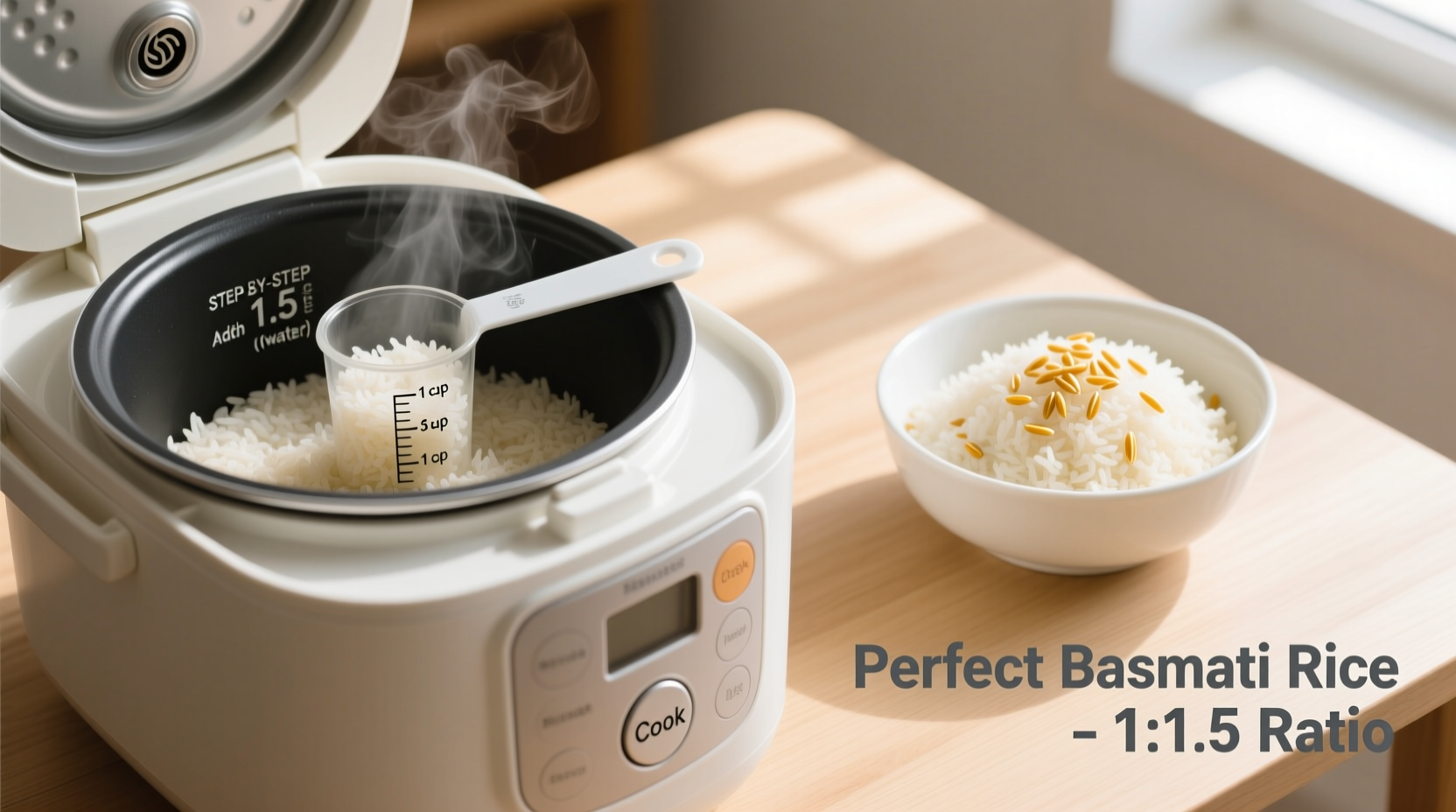The perfect method for making fluffy basmati rice in a rice cooker uses a 1:1.5 rice-to-water ratio with 20 minutes of soaking time, followed by 15-20 minutes of cooking and a 10-minute resting period. This technique produces distinct, non-sticky grains with authentic fragrance every time.
Antonio Rodriguez here with a foolproof method that transforms your rice cooker into a basmati rice perfection machine. After years of testing professional techniques in both restaurant kitchens and home settings, I've refined a process that consistently delivers restaurant-quality results without the guesswork. Forget sticky, mushy rice—this guide gives you light, fragrant basmati grains that stay separate and fluffy.
Why Your Previous Attempts Failed
Most home cooks make basmati rice incorrectly because they skip critical steps that professional kitchens never overlook. Basmati's long, delicate grains require precise water ratios and preparation techniques that differ from regular white rice. The rice cooker's "set it and forget it" approach works only when you understand the science behind the process.
What You'll Need for Perfect Basmati Rice
Before you begin, gather these essentials:
- 1½ cups (300g) high-quality basmati rice (look for aged Indian or Pakistani varieties)
- 2¼ cups (540ml) cold water (filtered preferred)
- 1 teaspoon salt (optional but recommended)
- 1 tablespoon neutral oil or ghee
- Rice cooker with standard "white rice" setting
- Fine-mesh strainer
- Cotton kitchen towel
| Ingredient | Measurement | Professional Tip |
|---|---|---|
| Basmati rice | 1½ cups (300g) | Use aged rice (1-2 years) for maximum fragrance and elongation |
| Water | 2¼ cups (540ml) | Measure after rice soaking for accuracy |
| Soaking time | 20 minutes | Never skip—this prevents cracking during cooking |
| Cooking time | 15-20 minutes | Depends on rice cooker model and altitude |
The Step-by-Step Process
Step 1: Select and Rinse Properly
Choose premium aged basmati rice—look for "Extra Long Grain" or "Traditional Aged" labels. Pour rice into a fine-mesh strainer and rinse under cold running water for 2-3 minutes until water runs clear. This removes excess starch that causes stickiness. According to the USDA Food Safety and Inspection Service, proper rinsing reduces surface starch by up to 30%, crucial for achieving separate grains.
Step 2: Soak for Optimal Results
After rinsing, transfer rice to a bowl and cover with fresh cold water. Let soak for exactly 20 minutes—no more, no less. This critical step allows grains to absorb moisture evenly, preventing breakage during cooking. Soaking time matters: less than 15 minutes yields undercooked centers, while over 30 minutes makes grains too fragile. The University of California's Agricultural and Natural Resources department confirms that proper soaking reduces cooking time by 15-20% while improving texture.

Step 3: Prepare the Rice Cooker
Drain soaked rice thoroughly in your strainer, then spread on a clean cotton towel for 5 minutes to remove surface moisture. Add rice to the rice cooker pot with measured water, salt, and oil. Gently stir once to distribute ingredients—never stir after this point. The oil creates a barrier that prevents starch from bonding grains together.
Step 4: Cook with Precision
Close the lid and select the "white rice" setting. Most modern rice cookers automatically adjust for perfect results, but monitor the process. Cooking typically takes 15-20 minutes depending on your model. When the cooker switches to "warm," resist the urge to open it—let rice rest for 10 minutes. This resting period allows steam to finish cooking the grains evenly without overcooking the bottom layer.
Troubleshooting Common Issues
Problem: Rice is too sticky
Solution: You likely didn't rinse thoroughly enough or used too much water. Try increasing rinse time to 4 minutes and reduce water by ¼ cup next time. Professional chefs at the Culinary Institute of America recommend using a digital kitchen scale for precise water measurements, as cup measurements can vary by up to 15%.
Problem: Rice is crunchy
Solution: Either insufficient soaking time or water ratio was too low. Extend soaking to 25 minutes and add 2 tablespoons water to your next batch. At higher altitudes (above 3,000 feet), increase water by 2-4 tablespoons as boiling points decrease.
Problem: Rice is mushy
Solution: Over-soaking or too much water. Reduce soaking time to 15 minutes and decrease water by ¼ cup. Remember that residual heat continues cooking rice during the resting phase—never skip this step.
Serving and Storage Guidelines
Fluff rice gently with a fork before serving to maintain grain integrity. Serve immediately for best texture. Leftovers should be cooled within 2 hours according to CDC food safety guidelines. Store in an airtight container in the refrigerator for up to 4 days. When reheating, add 1-2 tablespoons water per cup of rice and use the rice cooker's steam function for best results.
Why This Method Works Every Time
This technique combines traditional Indian preparation methods with modern appliance science. The precise 1:1.5 water-to-rice ratio accounts for both the rice's absorption needs and evaporation during cooking. The 20-minute soak mimics professional restaurant techniques while working within home kitchen constraints. By understanding these principles rather than just following steps, you'll adapt the method to any rice cooker model or altitude.











 浙公网安备
33010002000092号
浙公网安备
33010002000092号 浙B2-20120091-4
浙B2-20120091-4